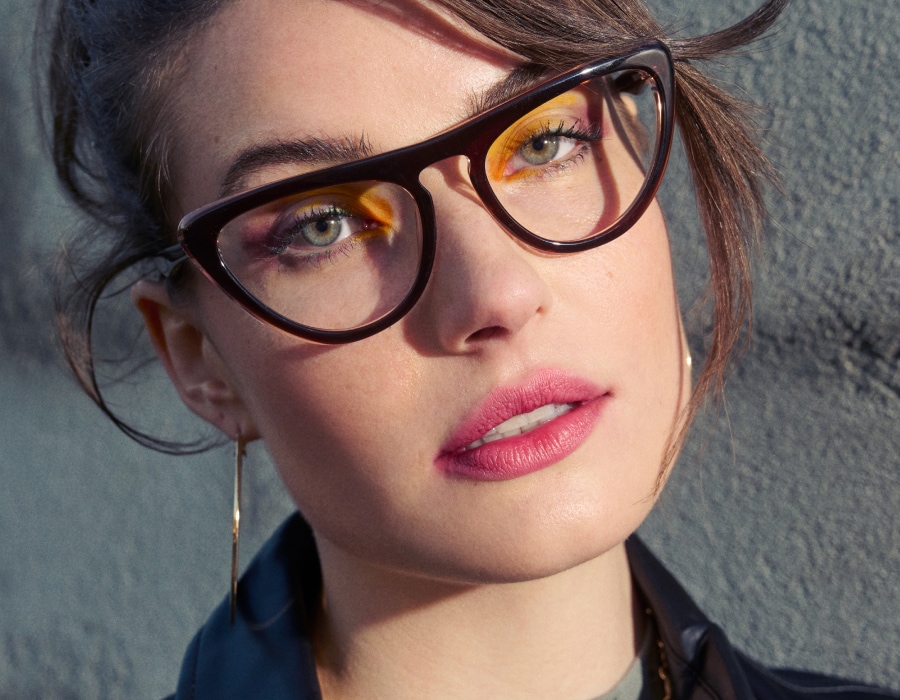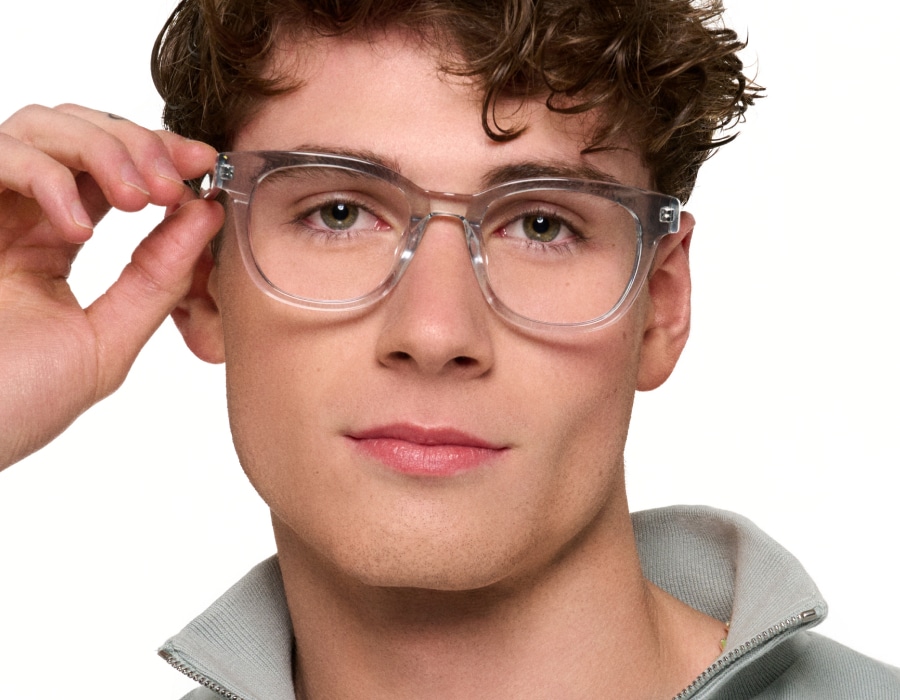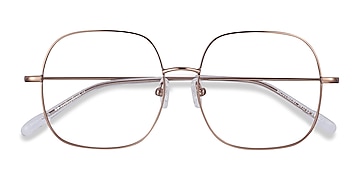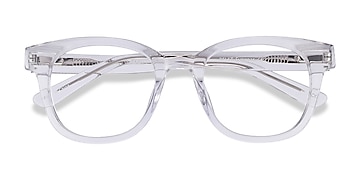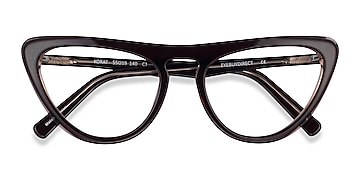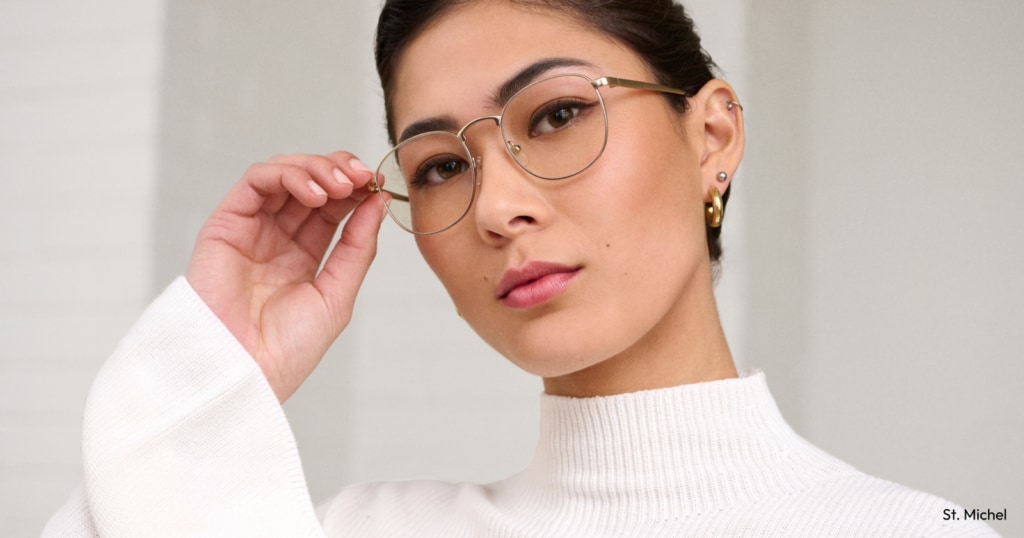Reviewed by Thomas Stokkermans, OD, PhD on July 10, 2023
Hazel eyes are among the most captivating eye colors and are known for their blend of green, brown, and gold. Their appearance can shift, making them both unique and eye-catching.
Here we explore what makes hazel eyes so intriguing and how to enhance them with the right eyewear, makeup, and more.
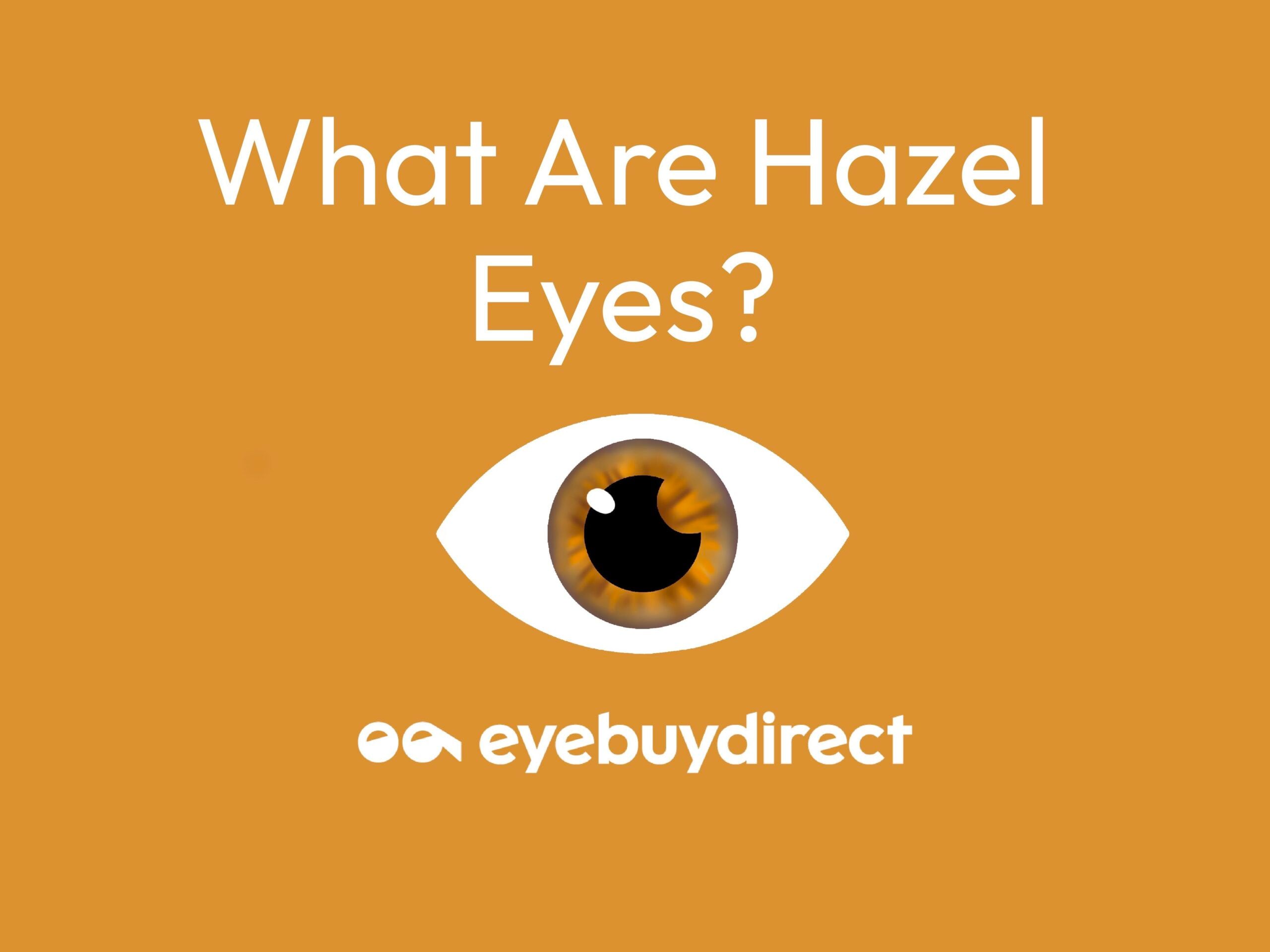
Understanding Hazel Eyes
From genetics to the way light interacts with the iris, several factors influence how hazel eyes look and why they may appear to change.
What Are Hazel Eyes?
Hazel eyes combine green, brown, and gold, creating a distinctive appearance. Their ability to change color based on light and surroundings adds to their allure.
Both melanin and light influence the coloration of hazel eyes. Melanin, the pigment responsible for coloring skin, hair, and eyes, is present in a concentrated amount in hazel eyes, resulting in a multicolored effect. Light scattering, particularly through the Tyndall effect, also impacts their appearance by reflecting off tiny particles in the eye.
The Science Behind Eye Color
Eye color is determined by genetics and melanin levels in the iris. The genetic makeup inherited from our parents dictates melanin amount, influencing eye color.
With hazel eyes, the melanin is balanced, allowing various colors to emerge. The structure of the iris and its light interaction also contribute to eye color. Light reflection and absorption in the iris can alter the colors visible in hazel eyes. Understanding these factors enhances our appreciation for the beauty of hazel eyes.
Eyewear for Hazel Eyes
Picking the right eyewear for your hazel eyes can make them stand out and enhance your natural features.
Choosing the Right Glasses
Hazel eyes, with their unique blend of colors, can be accentuated with the right glasses. Frame color plays a significant role. Green frames can highlight the green elements in hazel eyes. Eyebuydirect offers a variety of eyewear options for people with hazel eyes, including vibrant green glasses suitable for any occasion. Purple glasses or warm, earthy tones such as gold, tortoise ,and brown frames also complement hazel eyes.
Sunglasses and UV Protection
Protecting your eyes from UV rays is crucial for maintaining eye health, as excessive exposure can lead to issues such as cataracts. Selecting quality sunglasses is essential. For hazel eyes, frames in warm tones like marbled hazel or tortoise sunglasses can enhance eye color.
Enhancing Hazel Eyes
Hazel eyes stand out on their own, but the right makeup and hair choices can make them even more striking.
Makeup Tips for Hazel Eyes
The blend of green, brown, and gold in hazel eyes offers unique makeup opportunities. Use earthy eyeshadows like warm browns and deep greens to emphasize the green tones. Gold and bronze shades can enhance the golden hues. For a dramatic effect, purples and plums provide a striking contrast.
Opt for rich brown or dark green eyeliner for a softer appearance instead of black. Brown or black mascara defines your eyes without overpowering them. Use a highlighter on the inner corners and brow bone to brighten and draw attention to your hazel eyes. Thoughtfully combining these elements lets you highlight your eyes beautifully. Whether for day or night, these tips help accentuate the beauty of hazel eyes.
Best Hair Colors for Hazel Eyes
Selecting the right hair color can enhance the distinctive tones in hazel eyes. Rich shades like chestnut brown or caramel accentuate the golden hues. Auburn or copper shades can emphasize the green of hazel eyes. Soft honey blondes or light browns offer gentle enhancement. For a bolder look, deep burgundy or mahogany creates a striking contrast.
Choose a hair color that complements the natural tones in your hazel eyes to maintain focus on them. Whether you opt for subtle or bold, the right hair color beautifully frames your hazel eyes.
The Cultural and Historical Significance of Hazel Eyes
Hazel eyes have captivated people throughout history, often appearing in myths and legends. Their shifting colors add an element of mystery, including within:
- Celtic narratives – Hazel eyes signified wisdom and insight, frequently linked to seers and druids who were believed to possess extraordinary vision.
- Greek mythology – Hazel eyes were associated with Athena, the goddess of wisdom.
- Slavic folklore – Those with hazel eyes were thought to have a connection with nature and the ability to communicate with spirits.
These narratives illustrate how various cultures have celebrated hazel eyes as symbols of balance and harmony. The charm of hazel eyes continues to inspire, underscoring the enduring power of myths in shaping perceptions.
Throughout history, hazel eyes have held special meanings in diverse cultures, such as:
- Western societies – Hazel eyes are often seen as mysterious and captivating, suggesting a dynamic personality. Literature and art frequently depict characters with hazel eyes as intriguing figures.
- Some Eastern cultures – Hazel eyes are considered rare and beautiful, symbolizing uniqueness.
- Parts of the Middle East – Hazel eyes are believed to bring good luck and success.
- Certain indigenous cultures in the Americas – Hazel eyes represent a profound spiritual connection with nature.
These varied interpretations highlight the widespread fascination with hazel eyes and their role as a bridge between the physical and the mystical. As cultures evolve, the significance of hazel eyes remains a powerful testament to appreciating human diversity.
How Rare Are Hazel Eyes?
Hazel isn’t the rarest eye color, but it’s not very common either. Only about 18% of people in the U.S. have hazel eyes, compared to just 5% of the global population. Here’s how eye colors are represented worldwide according to WorldAtlas:
- Green eyes – 2%
- Gray eyes – 3%
- Hazel eyes – 5%
- Blue eyes – 8% to 10%
- Brown eyes – 70% to 80%
Worldwide, this green-brown eye color is most prevalent among people who live in Brazil, the Middle East, and North Africa. They’re also more common among people with Spanish heritage.
Complement Your Hazel Eyes
No one else in the world has your exact eye color, so why not highlight what you have? Make your one-of-a-kind eyes stand out with new eyeglass frames from Eyebuydirect in a complementary style, shape, and color.


